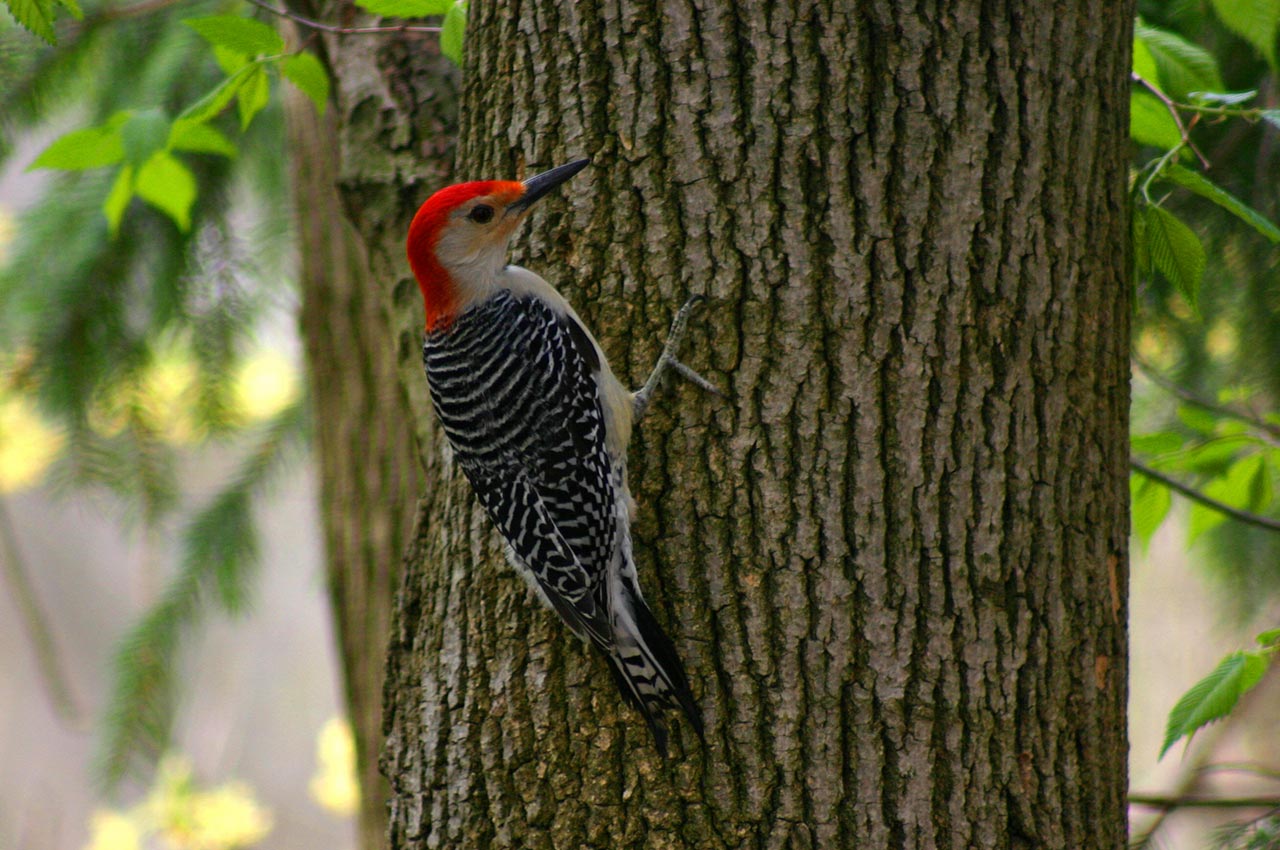Woodpeckers: A Comprehensive Guide to Understanding These Unique Birds
Woodpeckers, with their distinctive actions and physical qualities, have actually long mesmerized the inquisitiveness of ornithologists and nature lovers alike. As we discover the elaborate makeup, diverse varieties, and environmental value of woodpeckers, a deeper admiration for these distinct birds and the enigmas they hold unfolds.

Woodpeckers' Drumming Habits
Woodpeckers display a rhythmic and exact drumming habits that serves various vital functions in their daily lives. This behavior is primarily related to interaction, region protection, and foraging. The unique drumming sound is created by the quick pecking of their beaks versus difficult surface areas such as tree trunks, branches, or even steel things.
Interaction is a vital element of woodpecker behavior, and drumming plays a significant duty in this procedure. Woodpeckers use drumming to establish their visibility, draw in mates, and keep call with their partners and offspring. The regularity, intensity, and period of drumming sequences convey details messages to various other woodpeckers in the location.
Along with interaction, woodpeckers make use of drumming actions for territory defense. Woodpeckers in Florida. The loud and repetitive drumming functions as a cautioning to potential trespassers, signifying that the area is currently claimed. By establishing their territory via drumming, woodpeckers minimize the possibility of conflicts over useful resources such as food and nesting websites
Furthermore, woodpeckers additionally utilize drumming as a foraging technique. The balanced pecking helps them find insects concealing beneath the bark of trees by producing resonances that interrupt the target's cover-up. This actions showcases the versatility and ingenuity of woodpeckers in utilizing their drumming abilities for numerous vital purposes.
Distinct Adjustments for Tree Climbing
Having grasped the art of drumming to connect, safeguard region, and forage, woodpeckers have actually evolved distinct adaptations that facilitate their exceptional climbing up capabilities in their arboreal environments. Woodpeckers have zygodactyl feet, with 2 toes aiming onward and 2 toes aiming in reverse. These tail plumes give security and equilibrium, making it possible for woodpeckers to steer up tree trunks with accuracy and dexterity.
Moreover, woodpeckers have effective neck muscle mass and a special head structure that aid in their climbing abilities. Their solid neck muscular tissues permit them to swiftly eat tree bark without experiencing whiplash, while their thick skull and small brain act as shock absorbers, protecting them from the influence of duplicated drumming. These adaptations collectively enable woodpeckers to browse the upright world of trees with effectiveness and grace.

Role of Woodpeckers in Communities
By foraging for pests under the bark of trees, woodpeckers assist regulate parasite populaces, protecting against outbreaks that go to my blog can harm the total health and wellness of the forest. Furthermore, woodpeckers create cavities in trees that serve as vital nesting sites for a variety of various other bird species, advertising biodiversity within the environment.
In addition, the drumming and vocalizations of woodpeckers play a vital role in communication and region facility. These sounds not only serve to attract companions but also help define limits between different woodpecker territories, lowering disputes and promoting an unified coexistence within the forest community. Overall, the visibility of woodpeckers in woodland communities highlights their significance as keystone varieties, affecting the dynamics and operating of these habitats in complex means.
Composition: Specialized Beaks and Feet
In the intricate internet of forest communities, the specialized beaks and feet of woodpeckers are essential adaptations that allow them to meet their vital environmental roles. Woodpeckers possess distinct anatomical features that are specifically created to aid them in their foraging and nesting actions.
The most distinct attribute of woodpeckers is their solid, chisel-shaped beaks. These beaks are flawlessly adjusted for exploration right into wood to discover bugs, larvae, and sap covert below the bark of trees. The strong muscles and strong structure of their beaks allow woodpeckers to eat a price of up to 20 times per secondly without creating damages to their skulls.
Additionally, woodpeckers have specialized feet that aid in their Click Here acrobatic climbing abilities. Their feet have two toes pointing onward and two toes pointing backwards, providing a strong grasp on upright surfaces (Woodpeckers in Florida). This one-of-a-kind foot arrangement, along with stiff tail feathers that function as a supportive prop, allows woodpeckers to cling to tree trunks and branches with convenience while they recommended you read look for food or dig deep into nesting cavities
Woodpecker Species Diversity
What factors contribute to the impressive variety of woodpecker types across different habitats and areas? Woodpeckers are a varied team of birds located throughout various communities worldwide, with over 200 well-known varieties displaying adaptations to different atmospheres. One key variable driving this variety is the schedule of suitable habitats. Woodpeckers have actually progressed to populate a range of settings, from woodlands and woodlands to grasslands and deserts, each presenting unique difficulties that have actually influenced the evolution of unique woodpecker types.
One more contributing variable to woodpecker varieties diversity is their specialized feeding behaviors. Various species have progressed to exploit numerous food sources, such as insects, tree sap, fruits, and nuts, resulting in the advancement of details adjustments in beak form, dimension, and stamina. These adjustments make it possible for woodpeckers to forage efficiently in their respective habitats, minimizing competitors amongst varieties and advertising niche differentiation. In addition, geographical seclusion and historic factors have contributed fit the circulation and variety of woodpecker species, resulting in the large selection of specialized adjustments seen in these interesting birds.

Final Thought
In conclusion, woodpeckers are remarkable birds that display one-of-a-kind drumming habits, specialized adjustments for tree climbing, and play essential duties in communities. With a varied range of woodpecker varieties found worldwide, these birds are necessary for maintaining the health and wellness and equilibrium of forests and timberlands.